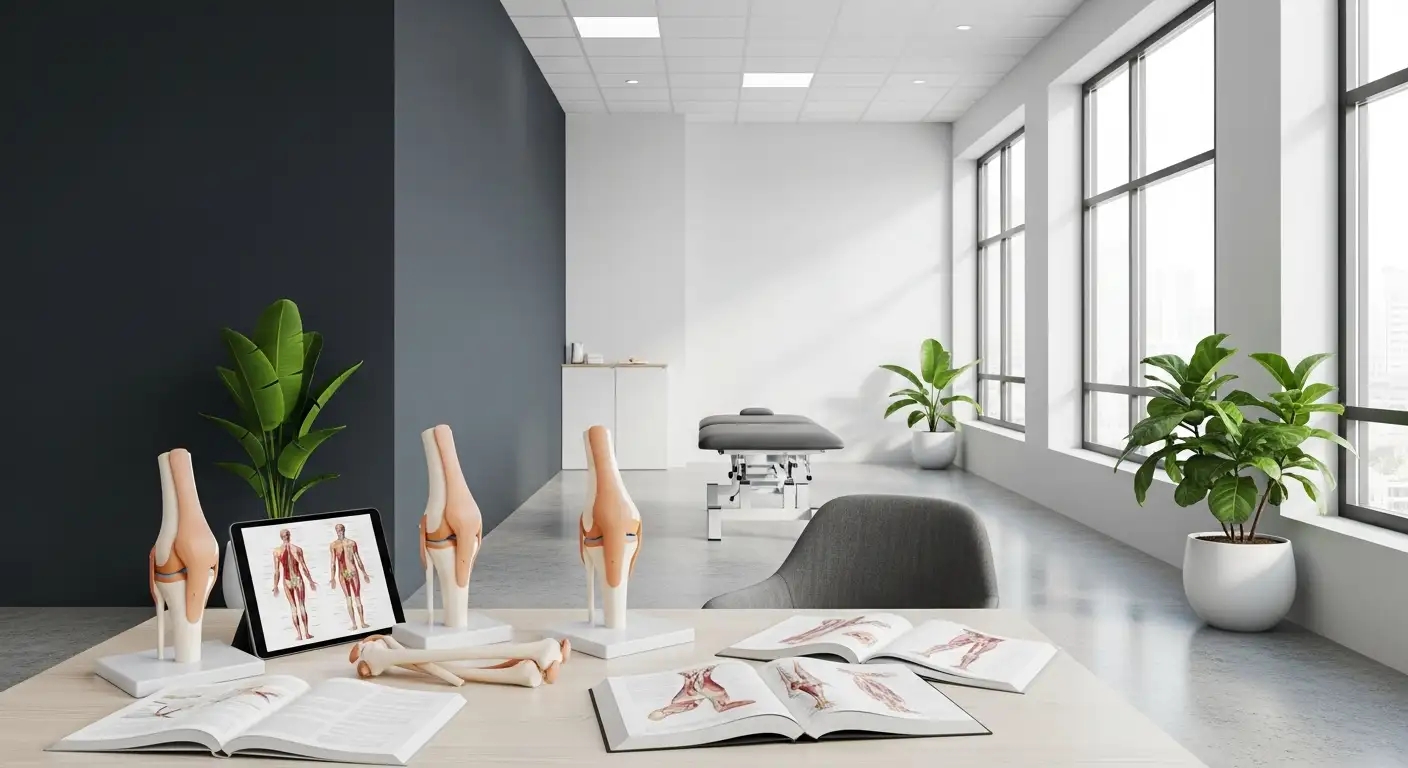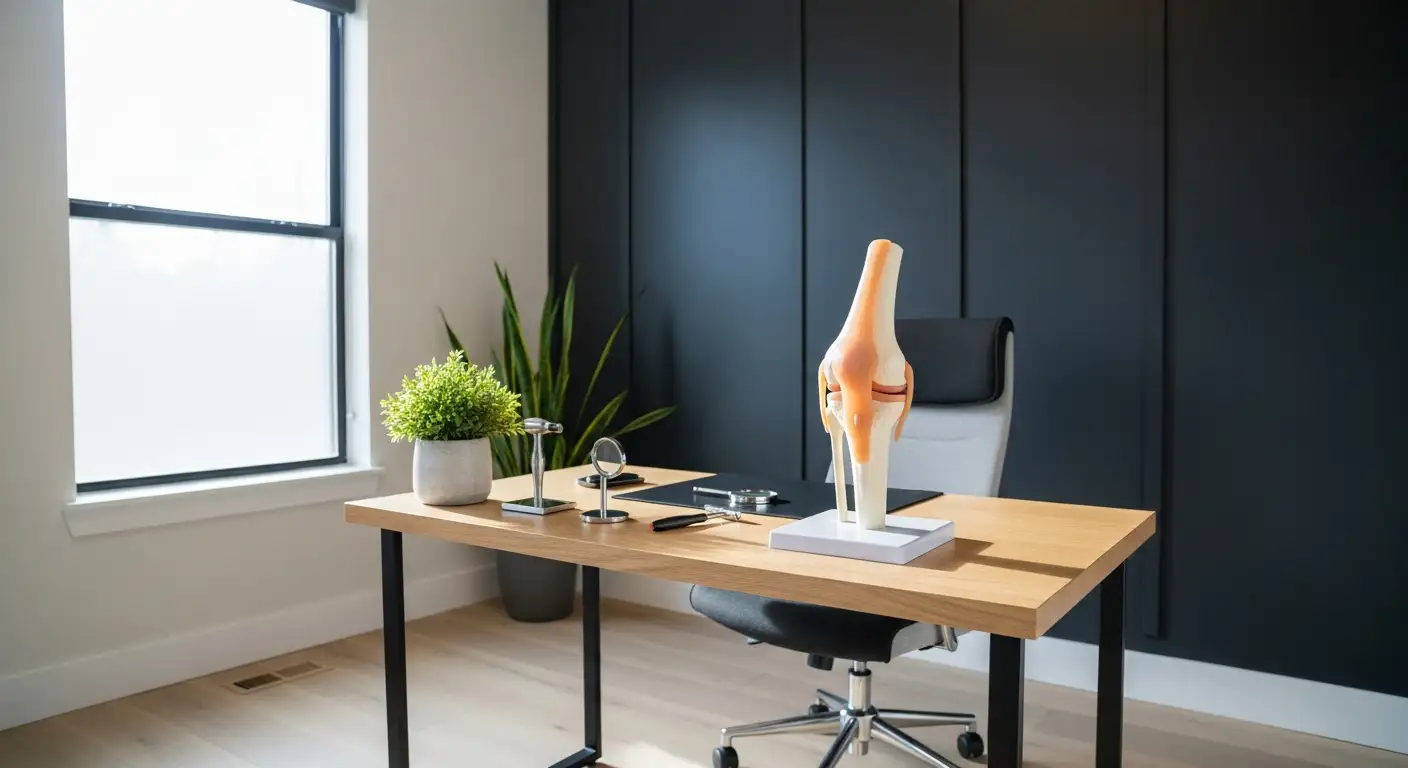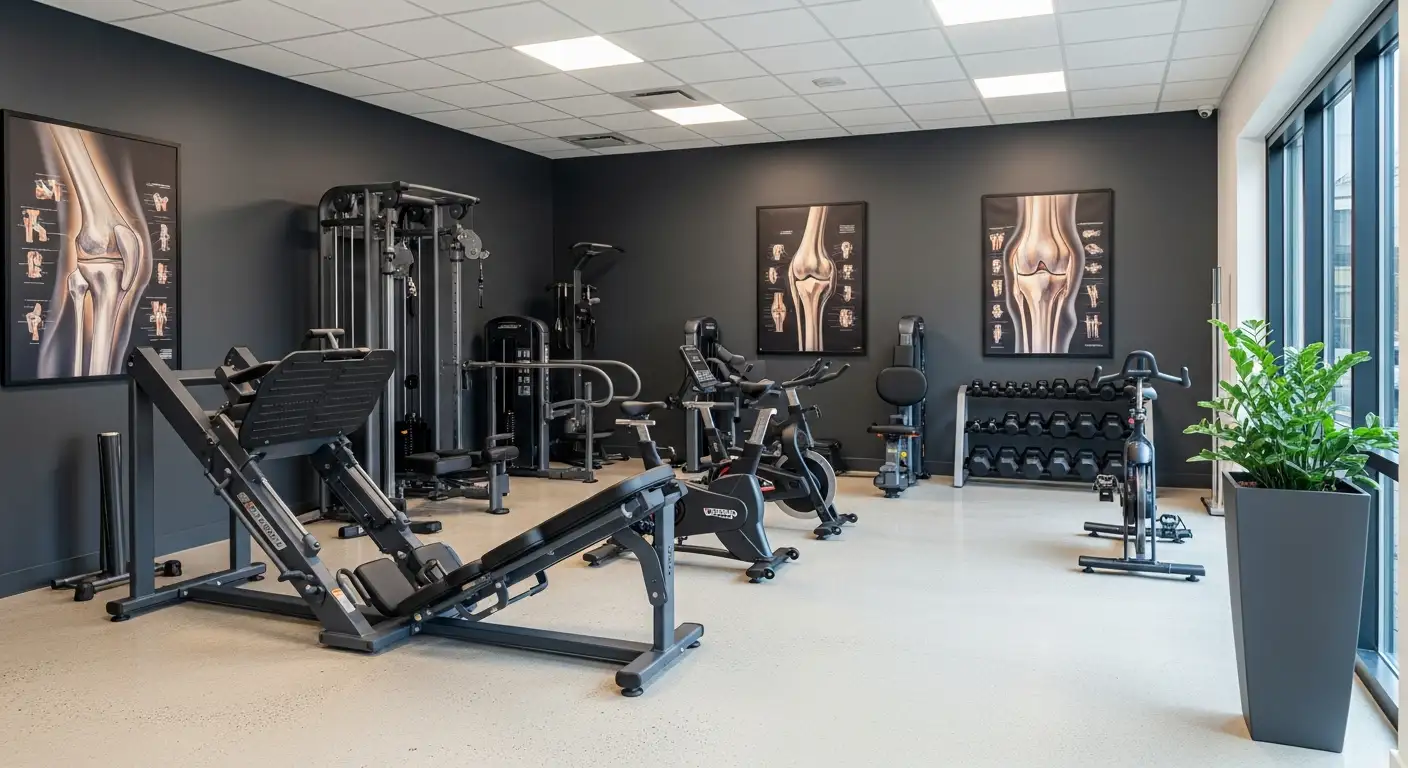Understanding Knee Pain
Knee pain is a common problem that can occur in people of all ages. It can be caused by a variety of factors and conditions, and its severity can range from mild discomfort to intense pain that interferes with daily activities. In some cases, individuals may experience severe knee pain when standing up, a symptom that warrants attention and can indicate a serious underlying condition.
Common Causes of Severe Knee Pain When Standing Up
There are numerous potential causes of severe knee pain when standing up. Conditions such as knee osteoarthritis, knee bursitis, patellar tendinitis, and knee injuries such as ligament tears or meniscus tears often result in this type of pain. Another condition, patellofemoral pain syndrome, which is characterized by pain between the kneecap and the femur, can also lead to severe knee pain when standing up [2].

Additional factors that can contribute to severe knee pain include obesity, overuse of the knee joint, previous knee injuries, and the natural wear and tear that comes with aging. Each of these conditions and factors can contribute to the deterioration of the knee joint, leading to pain and difficulty when standing up.
Indicators of Severe Knee Pain When Standing Up
Severe knee pain when standing up is typically characterized by a sharp or intense pain that occurs during the transition from sitting to standing. This pain may be accompanied by other symptoms such as swelling and redness around the knee, a feeling of instability in the knee, or the inability to bear weight on the affected leg.
In some cases, severe knee pain when standing up can indicate a serious condition that requires immediate medical attention. According to Mayo Clinic, signs that one should seek immediate medical attention include severe pain that does not improve with rest, swelling and redness around the knee, and a feeling that the knee may give out.
It's crucial that anyone experiencing persistent and severe knee pain when standing up consult a healthcare provider promptly. This allows for a proper diagnosis and the implementation of an appropriate treatment plan to alleviate pain and improve knee function.
Possible Conditions for Knee Pain
Understanding the potential underlying conditions causing knee pain is an essential step towards effective treatment. For those experiencing severe knee pain when standing up, several possible conditions could be the instigators.
Knee Osteoarthritis
Knee osteoarthritis is a common cause of knee pain, particularly in middle-aged and older adults. It is characterized by the gradual breakdown of cartilage in the knee joint, leading to pain, stiffness, and reduced mobility. Those with knee osteoarthritis might notice an increase in pain when standing up from a sitting or lying position, or after periods of inactivity [3].
Patellar Tendinitis
Patellar tendinitis, an overuse injury affecting the tendon connecting the kneecap to the shinbone, can lead to severe knee pain when standing up. This condition is common among athletes who frequently run and jump, but it can also affect non-athletes. The pain associated with patellar tendinitis is often located at the front of the knee and can be exacerbated by physical activities or long periods of sitting.
Meniscus and Ligament Tears
Meniscus tears, particularly involving a torn medial meniscus, are a significant cause of severe knee pain when standing up. These injuries can result from sudden twisting movements or degenerative changes in the knee, causing pain and swelling in the affected area.
Similarly, ligament tears, such as ACL injuries, can result in severe knee pain when standing up. These injuries are often the result of sudden stops or changes in direction and can lead to pain, swelling, and instability in the knee.
While these are some of the most common conditions associated with knee pain when standing up, other potential causes include rheumatoid arthritis, gout, pseudogout, septic arthritis, and bone tumors. If you're experiencing frequent or severe knee pain, it's important to seek medical attention to identify the cause and initiate appropriate treatment.
Factors Contributing to Knee Pain
A variety of factors can contribute to severe knee pain when standing up, including obesity, aging, and previous knee injuries. By understanding these factors, one can take preventative measures and seek appropriate treatments to manage their knee pain effectively.
Obesity and Knee Pain
Obesity is a significant risk factor for knee pain. Excess body weight can put additional strain on the knee joints, leading to increased pain and discomfort when standing up. According to Healthline, maintaining a healthy body weight can help reduce the load on the knees, potentially alleviating pain and discomfort.
Impact of Aging on Knee Pain
Aging can lead to wear and tear of the knee joint, resulting in painful conditions such as osteoarthritis. According to Mayo Clinic, osteoarthritis commonly affects older people, but it can also occur in younger individuals, often as a result of injury or overuse. Thus, the impact of aging on knee pain is significant and warrants attention.
Knee Injuries and Pain
Previous knee injuries can lead to chronic knee pain when standing up. In addition, knee pain can develop due to repetitive daily activities, such as walking or stepping on and off curbs, even in individuals who are not athletes [5]. Furthermore, a muscular imbalance, where one muscle group may be stronger or more overworked than another, can lead to discomfort when standing up. This imbalance can also result from improper form, especially in athletes, causing different pains or compensations in the muscles.
It's important to remember that while these factors can contribute to knee pain, they are not the sole causes. If you're experiencing severe knee pain when standing up, it's important to consult a healthcare professional for an accurate diagnosis and treatment plan.
Treating Knee Pain
Dealing with severe knee pain when standing up can be challenging, but a range of treatment options are available to manage the pain and improve the quality of life. These options range from medications and physical therapy to surgical interventions in severe cases.
Medications and Pain Management
Medications and pain management strategies are often the first line of treatment for knee pain. Over-the-counter pain relievers may be used to alleviate mild to moderate knee pain. Nonsteroidal anti-inflammatory drugs (NSAIDs) are also commonly used to reduce inflammation and relieve pain. For severe knee pain, corticosteroid injections can be administered directly into the knee joint to provide relief.
Physical Therapy and Exercises
Physical therapy and exercises are vital treatment options for knee pain, aiming to strengthen the muscles around the knee and improve flexibility. Strengthening the muscles can provide better support to the knee and reduce strain on the joint, thereby easing the pain. Flexibility exercises can also help to improve the range of motion and reduce stiffness [6].
Physical therapists can design a program tailored to the individual's specific needs and abilities, which may include a combination of strengthening exercises, stretching, and low-impact aerobic exercises.
Surgical Interventions for Knee Pain
In cases where knee pain is severe or does not respond to other forms of treatment, surgical intervention may be considered. The type of surgery depends on the cause and severity of the knee pain. Arthroscopy, for example, is a minimally invasive procedure used to remove loose bodies or repair cartilage or ligaments in the knee. On the other end of the spectrum, a knee replacement surgery might be necessary in cases of severe osteoarthritis or other degenerative conditions.
It's essential to remember that the right treatment for knee pain depends on the underlying cause, severity, and individual health condition. Always consult with a healthcare professional to determine the most suitable treatment plan.
Preventing Knee Pain
Preventing severe knee pain when standing up involves considering various lifestyle factors. Some of the essential aspects include maintaining a healthy lifestyle, using appropriate footwear, and incorporating low-impact exercises into your routine.
Importance of a Healthy Lifestyle
Maintaining a healthy body weight can help reduce the load on the knees, which may alleviate pain and discomfort when standing up. Weight loss can significantly reduce knee pressure, helping to minimize pain and improve mobility. Furthermore, a balanced diet rich in anti-inflammatory foods can aid in managing inflammation, a common cause of knee pain.
Role of Proper Footwear
The type of footwear you wear plays a crucial role in knee pain management. Wearing supportive shoes with good cushioning and shock absorption can help reduce the impact on the knees when standing or walking. Shoes should provide ample arch support, maintain foot alignment, and distribute body weight evenly across the foot. If necessary, consider using orthotic inserts for additional support and comfort.
Low-impact Exercises and Knee Health
Engaging in regular, low-impact activities can help build strength in the muscles that support the knee joint without causing additional stress or pain. These activities can include swimming, cycling, or using an elliptical machine.
Strengthening the quadriceps, hamstrings, glutes, and hip muscles can help support the knee joint and reduce the risk of pain. Specific exercises and stretches such as Side Leg Raise, Single-Leg Lift, Hamstring Stretch, and Quadriceps Stretch are recommended to prevent and treat knee pain.
Remember to stretch regularly for enhancing strength and flexibility. For instance, sitting for extended periods can lead to tight hamstrings, which can limit muscle potential, causing discomfort in the muscle itself or in the knee.
While these measures can help prevent knee pain, it is advisable to consult a medical professional if sudden or sharp knee pain occurs without any recent strenuous activity, if mobility is affected, or if conservative methods like rest and pain medication are ineffective. Symptoms like clicking, popping, or knee buckling also warrant medical attention.
When to Seek Medical Attention
While knee pain is relatively common, severe knee pain when standing up can be an indicator of a serious underlying condition that requires medical attention. Recognizing the signs and understanding when to consult a healthcare provider is crucial in managing this type of pain.
Recognizing Serious Symptoms
Severe knee pain when standing up is an indicator that one may need immediate medical attention. Several signs can be indicative of a serious problem, particularly if the knee pain was caused by an injury or accident, is accompanied by swelling and redness, is severe and doesn't improve with rest, or if there's a feeling that the knee may give out.
Other symptoms to watch out for include instability in the knee joint, such as wobbling or a sensation of collapse, which generally indicates a ligament problem. If persistent knee pain interferes with sleep, this should also be taken seriously. Furthermore, if leg or knee pain doesn't increase when pressure is applied to the knee, the discomfort may stem from sciatica or another non-knee condition. All these signs should prompt an immediate visit to a healthcare provider [9].
Importance of Timely Consultation
Persistent knee pain, especially when standing up, should not be overlooked. It is essential to consult a healthcare provider to receive a proper diagnosis and appropriate treatment.
Severe knee pain when standing up can be a result of various conditions including bursitis, arthritis in the knee, meniscus tears, patellar tendinitis, or trauma, such as a fracture or torn ligament. The treatment options vary depending on the underlying cause and may include medications, physical therapy, injections, and surgery in severe cases [3].
Timely consultation helps in early diagnosis and management, potentially preventing further damage and ensuring a better prognosis. As the old saying goes, "A stitch in time saves nine." The same applies to our health. An early intervention can save one from potential discomfort and disability. It is advisable to act promptly when severe knee pain is experienced when standing up.
References
[2]: https://www.verywellhealth.com/knee-pain-when-standing-5094605
[3]: https://www.mayoclinic.org/diseases-conditions/knee-pain/diagnosis-treatment/drc-20350855
[4]: https://www.mayoclinic.org/diseases-conditions/knee-pain/symptoms-causes/syc-20350849
[5]: https://www.hss.edu/article_stretches-exercises-knee-pain.asp
[6]: https://www.healthline.com/health/exercises-for-knee-pain
[7]: https://my.clevelandclinic.org/health/symptoms/21207-knee-pain
[8]: https://www.mayoclinic.org/symptoms/knee-pain/basics/when-to-see-doctor/sym-20050688
[9]: https://noyeskneeinstitute.com/10-signs-you-should-see-a-doctor-about-your-knee-pain/





